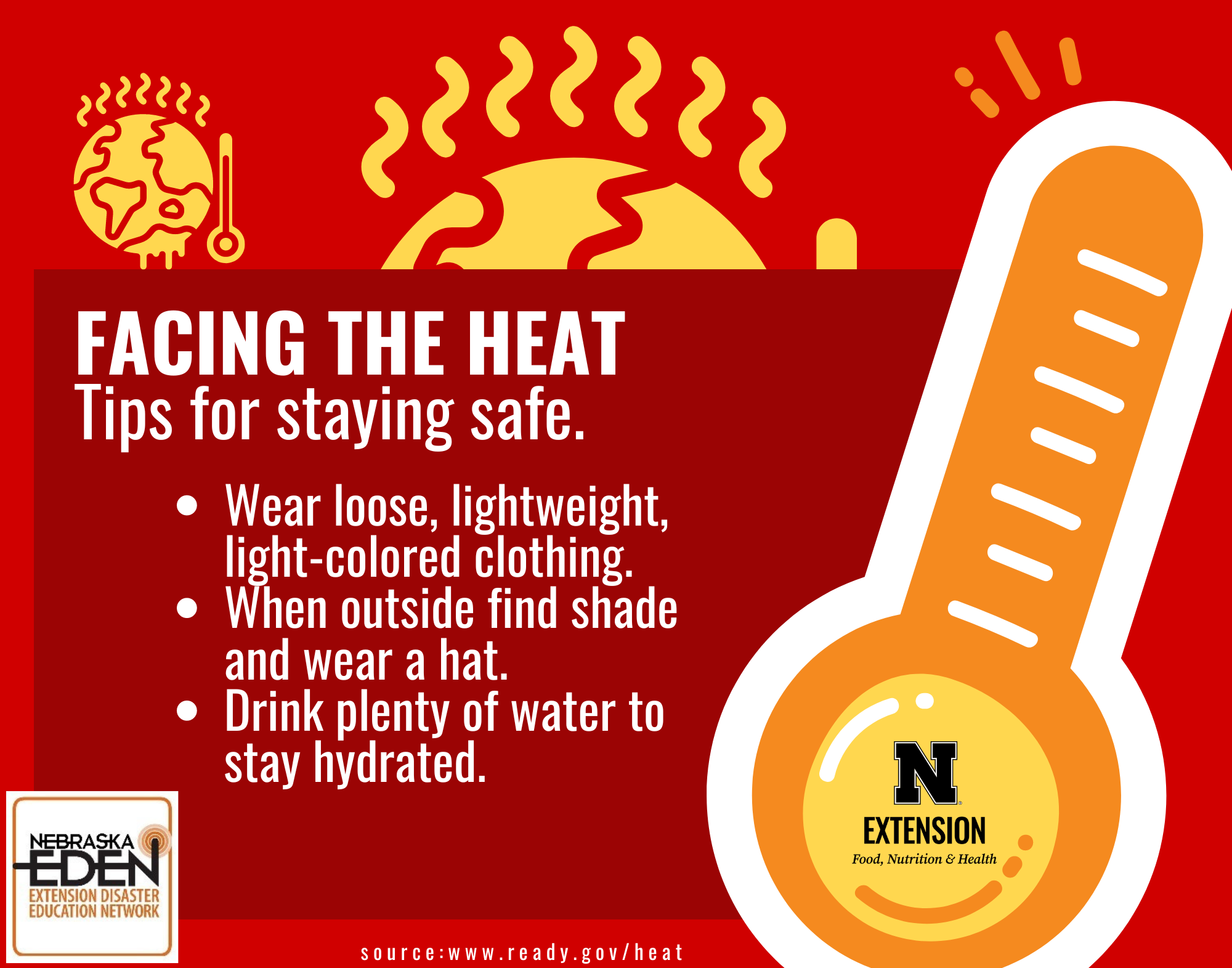![]()
By Ashley Ahrens MSN, RN. Nebraska Extension Food, Nutrition, and Health Educator/
Nebraska Extension Disaster Education/ Chadron Volunteer Fire Department.

Temperatures are rising quickly as Chadron prepares to enjoy Fur Trade weekend. High temps in Chadron are expected to reach 105 degrees by Sunday—meaning Chadron is going to experience a weekend of extreme heat.
Chadron Volunteer Fire Department and Nebraska Extension in Dawes County would like to remind the community to stay cool while enjoying the festivities. We can stay safe in high temperatures by wearing light-colored, lightweight and loose-fitting clothing.
When outside find a shady location, wear a wide brimmed hat and use a sunscreen with an SPF of at least 15. It is also important to drink plenty of fluids including water and sports drinks. Limit the amount of alcohol, soda, coffees and teas that are consumed as they lead to dehydration. Plan to cool down in an air-conditioned building throughout the day and check in on your friends, family and neighbors.
It is also important to know the signs of a heat emergency. Heat cramps are the mildest of heat injuries. Signs of a heat cramp include muscle pains or spasms in the stomach, arms, or legs. Skin will often be flushed and moist.
Heat exhaustion signs include muscle cramps, tiredness, weakness, fast or weak pulse, dizziness, headache, fainting, nausea, and vomiting. Skin will be heavy saturated with sweat and pale. If you or someone around you has signs of heat cramps or heat exhaustion try to find a cooler location. Remove excess clothing and take sips of sports drinks and water. If symptoms last more than an hour or get worse, seek medical attention.
Heat stroke is the most severe of the heat injuries. Heat stroke signs will include an extremely high body temperature (above 104 degrees), a rapid strong pulse, dizziness, confusion or unconsciousness. Skin will be red, hot and without sweat.
If you suspect a heat stroke, call 911 or get the person to a hospital immediately. Move them to cooler location and place a cold wet cloth, or ice pack on the head, neck, armpits, and groin.
Check out www.food.unl.edu for more food, nutrition, and health information and www.diasater.unl.edu for information and resources to help you, your family and the community prepare for and recover from disasters.
More information on extreme heat can also be found at ready.gov/heat
